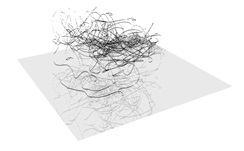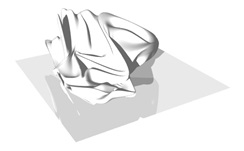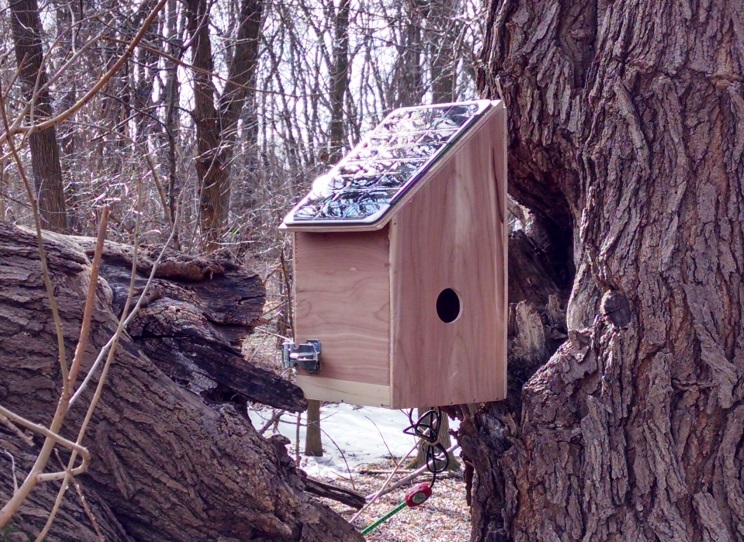Class Of 2014 Seed Projects
Variable Space—Studying Spatial Interpretation through Dance, Drawing and Digital Media
Variable Space is a collaborative project that seeks to better define our individual perceptions of space. With a shared understanding that space consists of both our physical surroundings and also intangibles, such as time and emotion, our intent is to develop an investigative process that reveals both the commonality and the anomaly in interpretation.
The project employs language as its catalyst and movement as its medium. Trained dancers will react to prompts, which will vary in style from lyrical to instructional to narrative. The dancers will provide interpretive movements to spoken (or otherwise audible) words; both movement and words will be digitally captured. This simultaneous digital recording of both the prompt and action will provide a frame-by-frame understanding of our individual reactions to space and spatial language.
Through motion capture and digital modeling of the dancers' movement, defining variables will be studied in greater detail. Defining variables include duration, range of motion, speed, extent, and frequency. Because this investigation is both scientific and aesthetic, data and findings will be analyzed and presented through a range of methods and visualizations. Variable Space is a collaboration between Drexel faculty: Valerie Fox, PhD, Department of English and Philosophy; Jacklynn Niemiec, Department of Architecture and Interiors; Leah Stein, Department of Dance; Stephen Pettit, Digital Media Program; and Jichen Zhu, PhD, Digital Media and Department of Computer Science. The collaboration is funded through the ExCITe Center Seed Grant (Class of 2014).
Developing Space
I’m working on developing a solid from the 3D motion curves captured. This solid is the space formed by the dancer’s movement. The space (rendered below) is a draft version of what will ultimately be CNC milled for each dancer. Providing a visual reference for each dancer’s interpretation relative to one another.


Follow this project's progress here!
A Free Repository of Material Things: A Next-Generation Information Ecology for Drexel Researchers
Digital technologies provide powerful ways for researchers to share findings with other researchers, students, and the public. While many research products are documents, many others consist of physical and material objects. For a long time, researchers interested in examining physical artifacts had a limited number of options: they could travel to visit the artifact, or the artifact could (perhaps) be shipped to them, or they could examine visual surrogates of the artifact, such as photographs. New digital technologies are providing innovative ways to interact with three-dimensional objects, for instance through the use of three-dimensional scans and images. Given these emerging imaging techniques, how should new digital artifacts be stored and made accessible? This research is exploring how we can move beyond existing traditional repository models, which often focus on documents, such as curatorial text or a photo, as a surrogate for the object in question, and towards technologies that support digital interactions with collections of physical and material objects.
To understand how new collections of research objects might be created and shared, this interdisciplinary project is combining approaches from information science, product design, ethnography, and human-computer interaction, to deploy employing a ‘design thinking’ methodology to investigate ways to move beyond existing repository models. The work includes a participatory design approach that will be used to gather requirements for tools for dissemination through various forms of research media. The team will work closely with a range of researchers on the Drexel campus who are engaged in a wide range of intellectual activities, and include co-creation sessions, self-recording, and observations and interviews. The research team will synthesize and visualize the data to identify patterns and connections as well as the diverse research artifacts. The outcomes will include descriptions and requirements for an information space that can provide access to all forms of research from tangible to intangible conducted at Drexel University, with the aim of advancing the research repository landscape and generating innovation in research exchanges between the public and universities.
Project Team:
Michael Khoo, Department of Informatics
Michelle Rogers, Department of Informatics
Verena Paepcke-Hjeltness, Department of Fashion, Product Design, Design and Merchandising
greenSTEM Network Design Challenge
Philadelphia Water started the greenSTEM Network to connect students to the environment through monitoring rain gardens, green roofs, and various types of green stormwater infrastructure. Using low-cost, DIY sensor kits and open-source code, the greenSTEM Network displays real-time environmental data (such as soil moisture, precipitation, sunlight, and temperature) to help students maintain healthy school gardens and learn about urban water issues, and conduct scientific experiments and analyses.
In spring 2015, Seed Project funding from the ExCITe Center supported weekly classes at Science Leadership Academy's Beeber campus in Overbrook. Ninth grade students learned to program Arduinos, low-cost microcontrollers, and applied technology to environmental problems. Each student soldered a datalogger and used soil moisture sensors and photocells to monitor plant health and coordinate watering. For their STEM-focused approach to solving water-related issues, the Schuylkill Action Network gave the SLA students the 2015 Scholastic Drinking Water Award, one of only three schools to earn the honor across the Schuylkill River Valley.
The 16-week course culminated in the design and build of solar-powered, wifi-connected birdhouses. Each birdhouse has two rooms—one for birds, and one for electronics. An infrared camera captures HD video of the birds inside the house and streams it live to computers inside the school for several hours each day. It also takes temperature and soil moisture readings. The temperature data indicate how comfortable the birds are inside their home, and the soil moisture levels can indicate when school gardens require watering. The birdhouses use low-cost technologies such as the Arduino microcontroller and the Raspberry Pi single-board computer.

Philadelphia Water staff collaborated with the Fairmount Water Works, Public Workshop and Jarvus Innovations. Drexel University undergraduates Darya Dragun, Marika Zeldenrust and Alexandra Jones, along with Temple intern Olivia Williams, were key contributors to the project. Plans are already being hatched (no birdhouse pun intended) for next year's greenSTEM project.